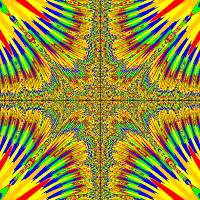I'm currently building an mp3 with star/pause and volume up/down interaction. I have the basics completed, but the volume up and down are really buggy. For instance, one click on volume down nearly mutes the song, while a click on volume up as my first adjustment will lower initial volume but gradually increase with clicks. Any input for fixes or a better approach is welcome. Here is the code for my volume up
Here is volume down
Here is MyWorld
Here is VolumeBar, which I havent scripted yet implemented yet but is placed as a holder in MyWorld.
Any help on the volume level is appreciated.
Also, I'm wanting to build a volume bar by stacking a new segment when VolumeUp is clicked, and removing a segment when VolumeDown is clicked. Any suggestions on a sound way of doing so is also welcome. Thanks again.
1 2 3 4 5 6 7 8 9 10 11 12 13 14 15 16 17 18 19 20 21 22 23 24 25 26 27 28 29 30 31 32 33 34 35 36 37 38 39 40 41 | import greenfoot.*; // (World, Actor, GreenfootImage, Greenfoot and MouseInfo)/** * Write a description of class VolumeUp here. * * @author (your name) * @version (a version number or a date) */public class VolumeUp extends Actor{ private GreenfootSound song; private int volume; public VolumeUp(int masterVolume, GreenfootSound song ){ this.volume = masterVolume; this.song = song; } /** * Act - do whatever the VolumeUp wants to do. This method is called whenever * the 'Act' or 'Run' button gets pressed in the environment. */ public void act() { changeOnClick(); System.out.print(song.getVolume() + "\n"); } public void changeOnClick(){ if (Greenfoot.mouseClicked(this)){ if(volume < 97){ volume += 3; song.setVolume(volume); } } } } |
1 2 3 4 5 6 7 8 9 10 11 12 13 14 15 16 17 18 19 20 21 22 23 24 25 26 27 28 29 30 31 32 33 34 35 36 37 38 39 40 | import greenfoot.*; // (World, Actor, GreenfootImage, Greenfoot and MouseInfo)/** * Write a description of class VolumeDown here. * * @author (your name) * @version (a version number or a date) */public class VolumeDown extends Actor{ GreenfootSound song; int volume; public VolumeDown(int masterVolume, GreenfootSound song ){ this.song = song; this.volume = masterVolume; } /** * Act - do whatever the VolumeUp wants to do. This method is called whenever * the 'Act' or 'Run' button gets pressed in the environment. */ public void act() { changeOnClick(); } public void changeOnClick(){ if (Greenfoot.mouseClicked(this)){ if(volume > 3){ volume -= 3; song.setVolume(volume); } } }} |
1 2 3 4 5 6 7 8 9 10 11 12 13 14 15 16 17 18 19 20 21 22 23 24 25 26 27 28 29 30 31 32 33 34 35 36 37 38 39 40 41 42 43 44 45 46 47 48 49 50 51 52 53 54 | import greenfoot.*; // (World, Actor, GreenfootImage, Greenfoot and MouseInfo)import java.awt.Color;/** * Write a description of class MyWorld here. * * @author (your name) * @version (a version number or a date) */public class MyWorld extends World{ private GreenfootSound song = new GreenfootSound ("Canon.mp3"); private int masterVolume =25; /** * Constructor for objects of class MyWorld. * */ public MyWorld() { super(800, 600, 1); build(); } public GreenfootSound getSong(){ return song; } public int getMasterVolume(){ return masterVolume; } public void setMasterVolume(int newVolume){ this.masterVolume = newVolume; } public void build(){ GreenfootImage background = getBackground(); background.setColor(Color.BLACK); background.fill(); StartButton play = new StartButton(song); addObject(play,400,250); VolumeUp volumeUp = new VolumeUp(masterVolume, song); addObject(volumeUp, 650, 300); VolumeDown volumeDown = new VolumeDown(masterVolume,song); addObject(volumeDown, 150, 300); VolumeBar volBar = new VolumeBar(); addObject(volBar, 150, 450); } |
1 2 3 4 5 6 7 8 9 10 11 12 13 14 15 16 17 18 19 20 | public class VolumeBar extends Actor{ private int index; public VolumeBar(){ } /** * Act - do whatever the VolumeBar wants to do. This method is called whenever * the 'Act' or 'Run' button gets pressed in the environment. */ public void act() { // Add your action code here. } } |






